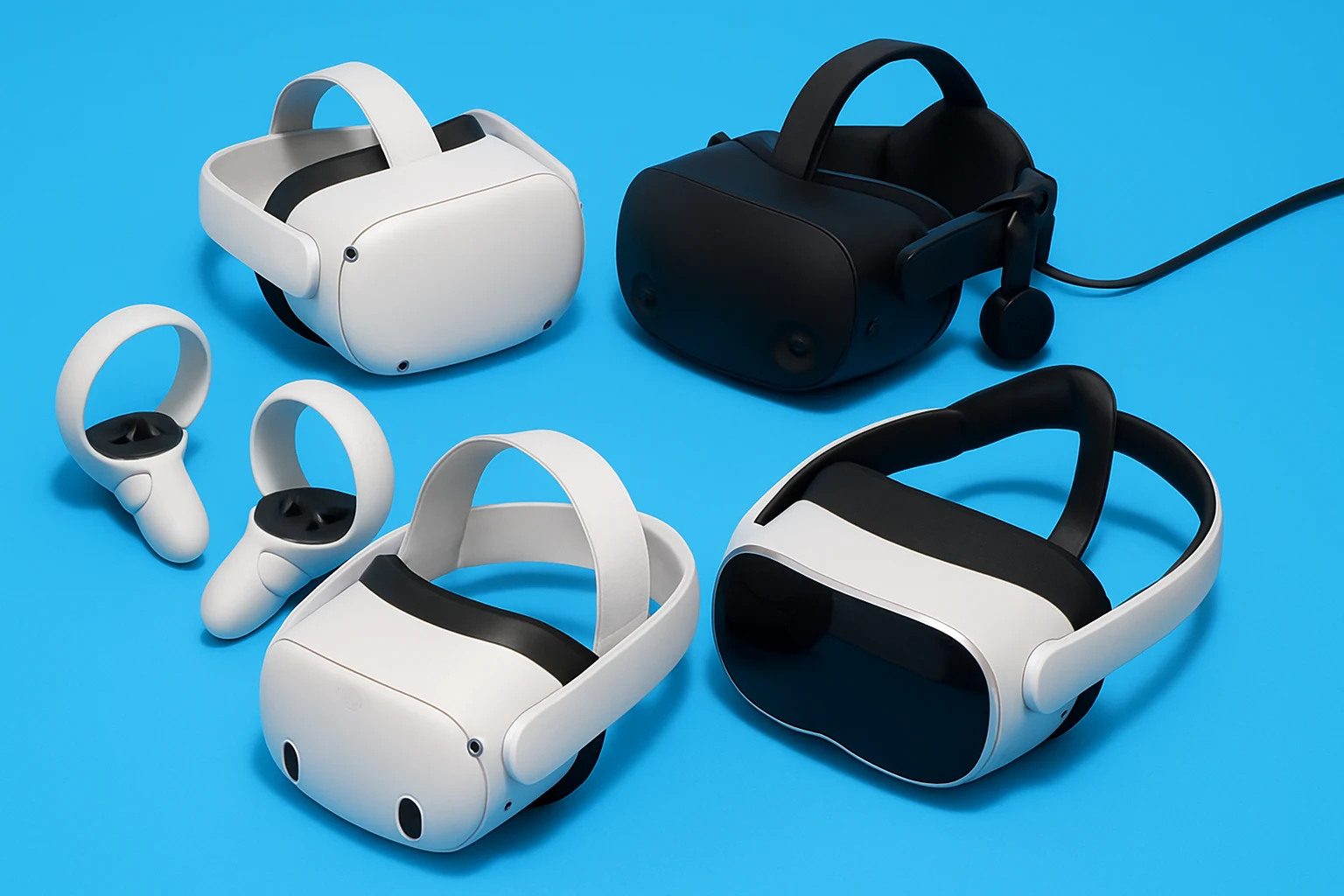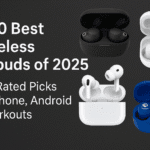Affordable VR Headsets for PC Gaming: A Buyer’s Guide
Table of Contents
VR isn’t just a sci-fi dream or a wallet-drainer anymore. In fact, affordable VR headsets for PC are popping up all over, delivering immersive gaming without costing more than a new graphics card. Thanks to smartphones and clever engineering, even budget gear can give you solid VR worlds. As one site notes, running VR on your computer means “budget VR can provide surprisingly robust virtual worlds at a fraction of the big-name headset costs”. In plain terms: you can dive into VR on a modest budget. Below we break down entry-level and mid-range picks, and highlight a best cheap VR headset so you can find the setup that makes sense for your wallet.
Entry-Level VR Headsets (Starter-Friendly Picks)
If you’re new to VR or just want to dip your toes without breaking the bank, there are a few standout entry-level headsets. These systems usually cost a few hundred dollars (or less on sale) and can connect to your gaming PC. For example, Meta’s Quest series is huge in this space. The Meta Quest 3S (128 GB) is basically a Quest 3 with some tweaks – and right now it’s only about $249 on Amazon (down from $299). Reviewers call it a steal: it’s “the best of both worlds… priced incredibly well at $299 to make mixed reality properly affordable”. In practice, that means you get quality VR with a ton of apps, and because it uses inside-out cameras for tracking, setup is easy (no extra sensors on walls).
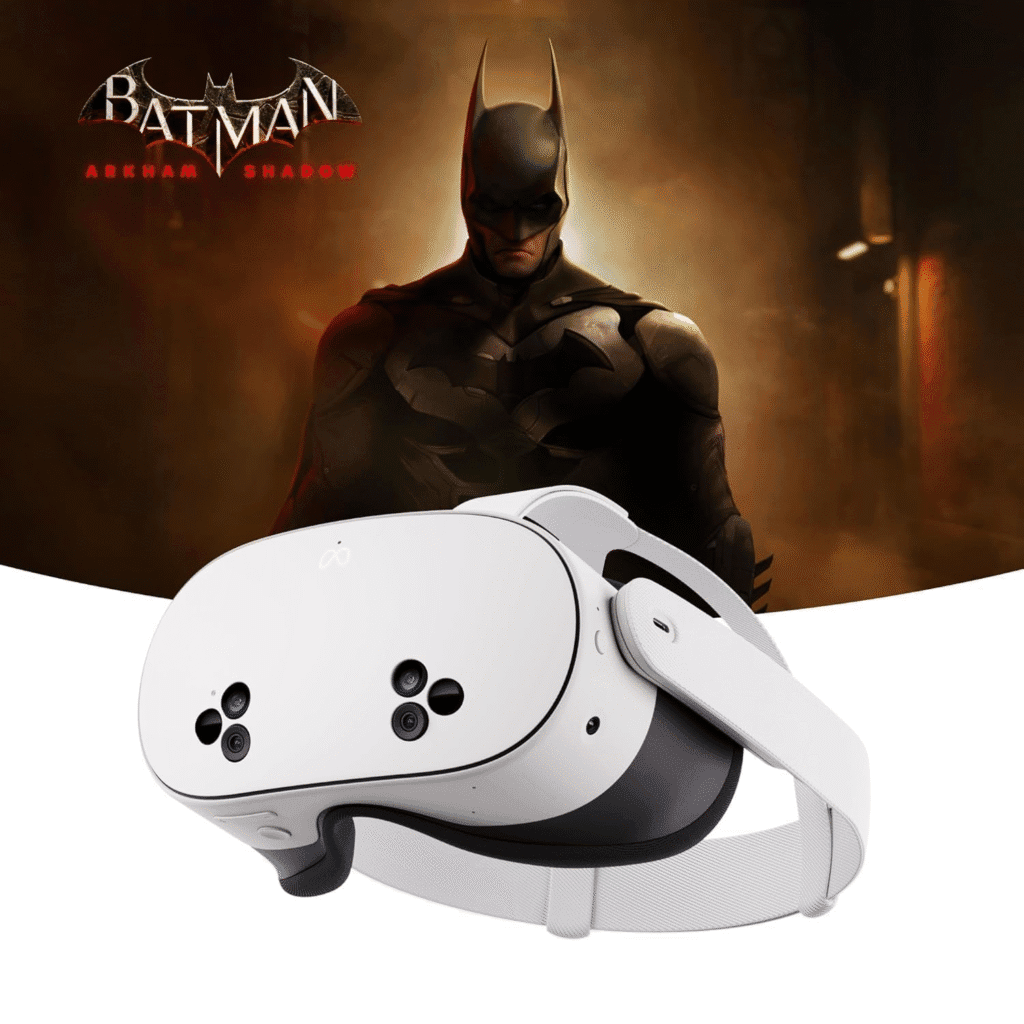
The Meta Quest 3S is light and comfy – the battery and sensors are balanced so you can game for hours without killing your neck. (One Gamer joked that after a two-hour Skyrim VR session with a light headset, “your neck won’t hate you” – a big plus!) It comes with two motion controllers and can tether to your PC via a Link cable or Wi-Fi (so it becomes a PC VR headset too).
If you find a Quest 2 (128 GB) for sale, that’s another cheap option – Meta cut its price to $299 to get more people into VR. It’s a bit older, but still packs 1832×1920 per-eye screens and handles most SteamVR games via cable or Air Link. Knoxlabs even calls Quest 2 “a great mid-range option” for balance of quality and price. The downside is it’s slightly heavier than the newer models, but it’s still comfortable for most players and includes controllers out of the box.
A few other entry-level picks are worth mentioning. Pico 4 (about $499) is an all-in-one headset with great specs: it boasts 2160×2160 per eye and pancake lenses for a slim, balanced design. Reviewers say the Pico 4 is “lightweight and comfortable” – its battery sits on the back of the headband for a nice weight balance. It even has full-color passthrough cameras for mixed reality. The catch? It’s still mostly sold in Europe/Asia, so in the US you might have to hunt it down.
In general, entry-level affordable VR headsets for PC will be all-in-one devices like Quest or Pico that can plug into a PC. They use inside-out tracking (no bulky sensors), give you wireless freedom, and include the two hand controllers. They won’t have the absolute sharpest screens or widest field of view – but at this price, they handle VR gaming (Beat Saber, Half-Life: Alyx, etc.) surprisingly well.
Mid-Range VR Headsets (Leveling Up)
If you can stretch your budget into the $500–$600 range, you unlock better visuals and wider features. Two big names here are Meta Quest 3 and HP Reverb G2.
- Meta Quest 3 ($499): Think of this as the big brother to the Quest 3S. Meta’s own PR says Quest 3 “features higher resolution, stronger performance… and a slimmer, more comfortable form factor”. In other words, it steps up the screen quality (around 2064×2208 per eye) and adds pancake lenses for crisp, vivid graphics. It’s still wireless by default, but you can plug it into your PC for top-tier VR. Quest 3 comes with new controllers (no tracking rings) and a better passthrough camera. It’s an all-in-one beast – still fairly affordable – and offers what Meta calls “mass-market VR and MR” in one headset. At $499 for the 128 GB model, it’s pricier than entry-level gear but delivers way higher fidelity.
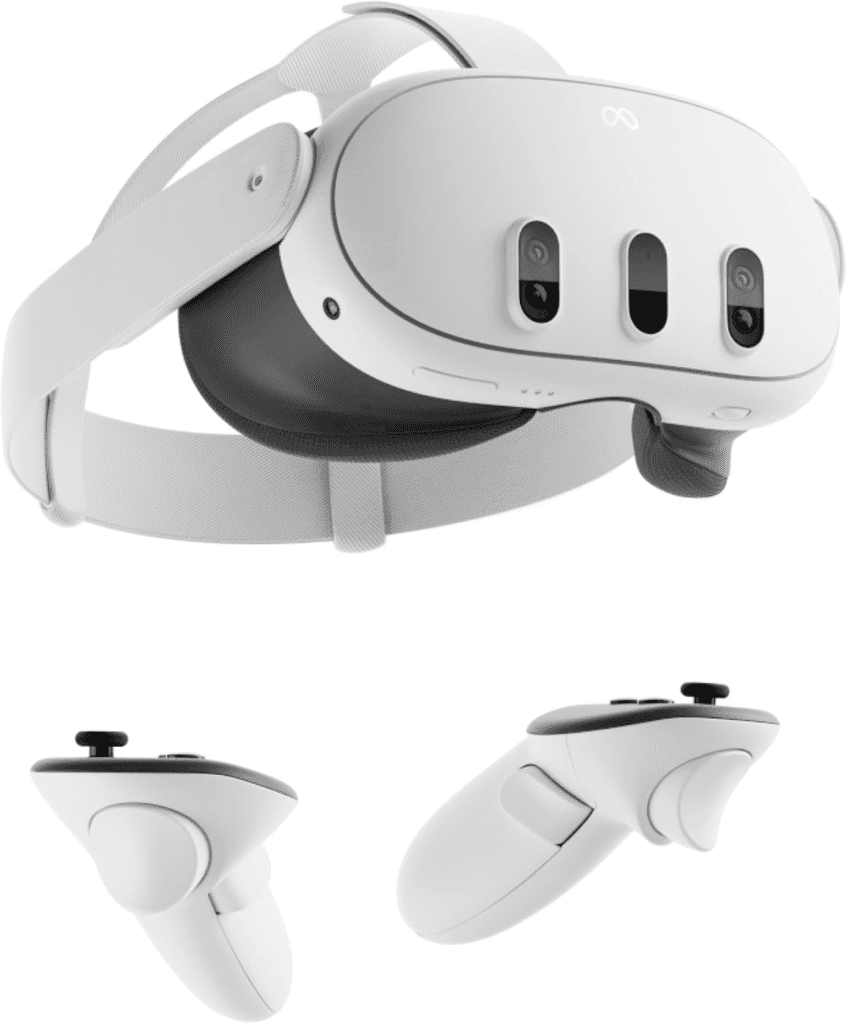
- HP Reverb G2 ($599): This headset hooks directly to your PC (you’ll need DisplayPort/USB-C). What it lacks in wireless freedom, it makes up for in sharpness. The Reverb G2 has a 2160×2160 display per eye, which is among the highest on any consumer VR headset. In practice, text and distant details look incredibly crisp – great for simulation games or sitting VR experiences. Knoxlabs notes the G2 “is known for its high-resolution display and comfortable design” and “delivers a premium VR experience at a mid-range price”. It’s also relatively comfortable, with a solid halo strap. Tracking is still inside-out with four cameras (so setup is plug-and-play). The catch: you do need a capable PC to run it, and a long tether cable. But if your rig can handle it, it’s a top choice for clarity.
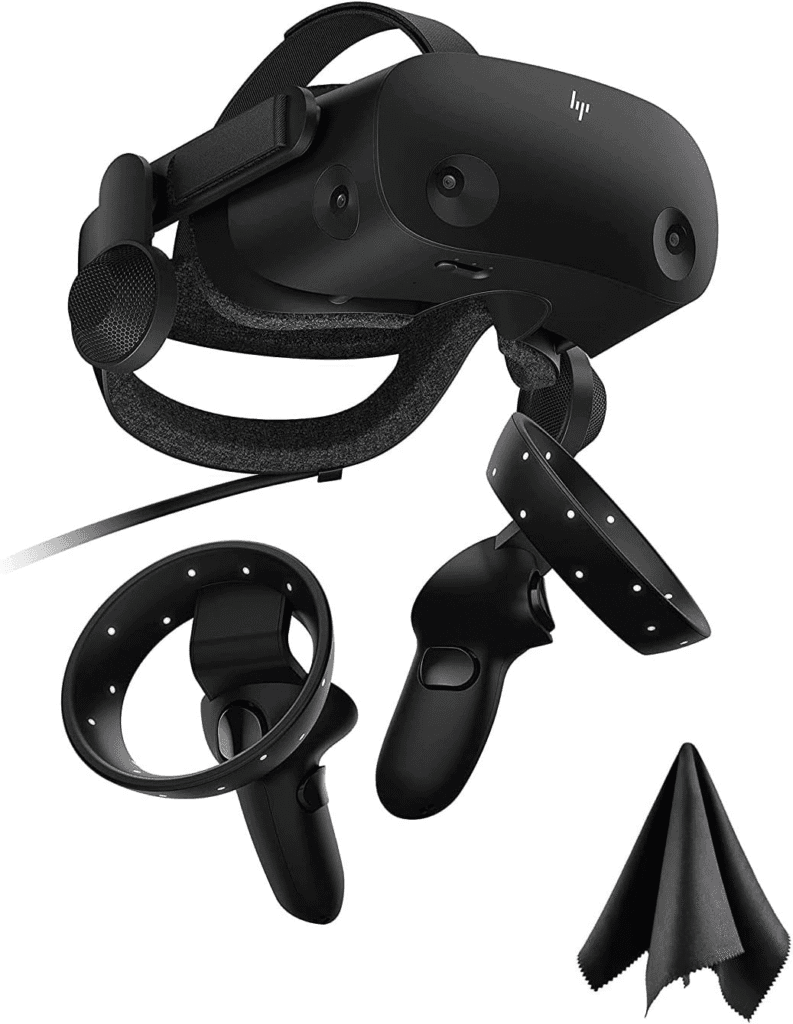
Other mid-range contenders might include things like the Pico 4 (again, since it’s in the $499 range for 128 GB) or even wireless headsets like Vive Flow (though Vive Flow is more for relaxation than gaming).
In short, mid-range affordable VR headsets for PC give you better resolution and visuals than the cheapest options. You’ll spend a few hundred more, but get a sleeker design (slimmer headset), sharper graphics, and usually a wider field of view. For example, Quest 3’s lenses and display make the world look noticeably clearer than Quest 2. And HP’s G2 literally doubles the pixel count per eye. Tracking and controllers are all included, so you get 6DoF motion controls out of the box.
The Best Cheap VR Headset for Value
If we had to crown “the best cheap VR headset”, many experts point to the Meta Quest 3S. It literally tops Tom’s Guide as the “best cheap VR headset”. Why? You get modern performance at an entry price. For around $249–299, the Quest 3S packs Meta’s speedy XR2 Gen 2 chip, a 120Hz display, and all the content/apps of the Meta store. It’s just a refreshed Quest 2 essentially, and reviews rave that “for this price, it’s great value”. PC Gamer even says Quest 3S is “the best budget HMD on the market” – it’s basically a Quest 2 but “mighty” for how cheap it is.
In practice, that means a pretty solid VR experience: smooth motion, clear-enough graphics, and comfy design. It won’t beat Quest 3 or Reverb in raw specs, but at the price it punches above its weight. If you’re cost-conscious, this is the headset to beat. It’s also wireless and standalone, but you can plug it into your PC when you want the fullest PC VR library. Controllers come in the box. In our conversations, friends often say this is the “sweet spot” – it’s cheap enough for anyone to try VR without feeling like they wasted money, yet new enough that you’re not playing with 5-year-old tech.
(Another contender often mentioned is Quest 2 itself – after price cuts, it’s basically cheaper entry-point. But since Meta has its newer 3S, most guides now lead with 3S as the “best cheap” pick.)
Things to Compare: Comfort, Visuals, Tracking, PC Needs
When comparing these headsets, here are the simple trade-offs:
- Comfort: A lighter headset is a lifesaver for long sessions. Modern designs (like Quest 3S/3 and Pico 4) put weight back on your headband or use slim lenses. For example, reviews of the Pico 4 praise its balance – the battery sits at the rear of the strap, giving “a more balanced experience” than older models. Most affordable headsets let you adjust the straps and the interpupillary distance (IPD) so you can get a snug fit. In general, the all-in-ones (Quest series) feel lighter and more cramped-phone-like, while tethered PC headsets (like Reverb) sit more like goggles.
- Visuals (Resolution & Refresh): More pixels and higher refresh = nicer picture. Cheap headsets start around 1832×1920 per eye (Quest 2, 3S) or 2064×2208 (Quest 3), and go up to 2160×2160+ (Reverb G2). Higher refresh rates (90–120Hz) give smoother motion. As one guide notes, the Reverb G2 offers “the highest resolution experience” available at its 2160×2160 per eye – so text and tiny details look ultra-sharp. Lower-end headsets still look good for most games, but you might notice a bit more screen-door effect (tiny gaps between pixels) and less crisp edges.
- Tracking: Thankfully most affordable VR now uses inside-out tracking (cameras on the headset). That means no wall-mounting sensors – you just define a play area and go. For example, the HP Reverb G2 uses four cameras for inside-out tracking, making setup “plug and play every time”. Quest headsets also track from built-in cameras. Inside-out tracking is convenient, but it can be a bit less perfect if controllers drift out of view. The high-end/expensive route (Valve Index or Vive with base stations) isn’t really on the budget list.
- Controllers: All of the above options come with the necessary hand controllers. These are fully 6DoF motion controllers (like two mini wands). You won’t need to buy them separately. Just remember to keep them charged (they’re usually USB-C or AA-battery).
- PC Requirements: Even budget PC VR expects a decent computer. Don’t plan on plugging these headsets into a weak laptop – one FAQ notes a PC must have “specific hardware requirements, like a high-end GPU, to run VR”. Aim for something like an NVIDIA RTX 3060/3070 or AMD RX 6600/6700 at least. Newer headsets may also need a free USB-C or DisplayPort. If your PC is a bit underpowered, remember that all-in-ones like the Quest can still run a lot of VR games internally, or stream wirelessly (at some quality loss).
- Space & Setup: VR is more fun if you have some open area (at least a 6×6 ft clearspace for room-scale movement). Clear that coffee table and swing arms! If you use a tethered headset (like Reverb G2), you’ll need a long cable; consider a ceiling pulley or wall mount for the cord. Wireless headsets (Quest) skip the cord, but you will need a good USB-C link cable if you want the clearest PC VR graphics. Finally, use the headset’s guardian/boundary system when setting up so you don’t walk into furniture.
Jump In – VR’s More Affordable Than You Think!
At the end of the day, VR doesn’t have to be a luxury. The market is full of affordable VR headsets for PC, from the super-cheap all-in-ones to modestly-priced tethered systems. In fact, experts point out that these budget-friendly systems can sometimes “rival costlier counterparts”. Don’t be intimidated by price tags – many of today’s devices (like the Quest 3S or Reverb G2) deliver polished VR that was unimaginable on a tight budget just a few years ago. So clear some space, hook up the headset and controllers, and get ready to step into virtual worlds. It’s never been easier—or cheaper—to give VR a try.

